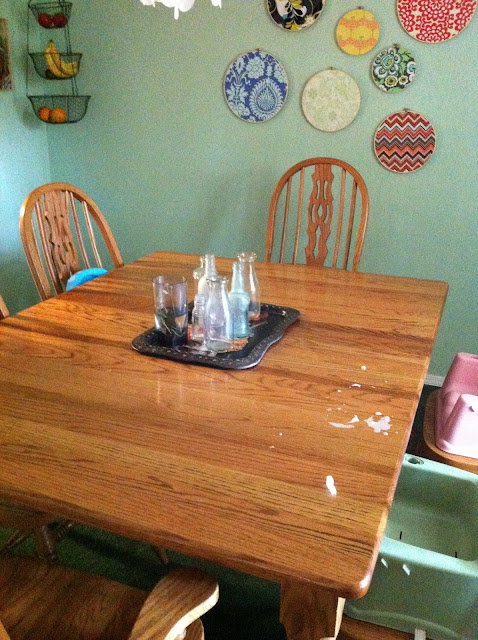Nothing says, "It's Spring!" like flowers in bloom. Around here, we love flowers. At least, Natalie and I love flowers. I think the boys could take 'em or leave 'em (including my husband), but since Natalie and I are fans, we have them. And decorate with them.
Today's project is actually called "Flower Pounding," and the gist of it is exactly how it sounds. You pound some flowers. A lot. And you end up with something really beautiful. I thought this project might be the best of both worlds for my kids: Daniel gets to pound with his new hammer and Natalie gets to make giant flower gardens.
Okay, here we go.
Materials:
fresh flowers and leaves
fabric (we used cheap utility fabric from JoAnn's)
butter knife
scissors
hammer
large piece of wood or mat
Since it has been such a nice day, I decided we should take this project outside. And it's fortunate that we did, because this is a little messy.
Choose a few flowers and leaves and arrange them on half of a scrap of fabric. I also picked a few blades of grass and weeds. Yes, we have lots of weeds in our yard. It's the natural look around here, folks.
Fold the other half of your fabric over your flowers...
And pound them! Daniel loved this part. The trick is to pound for just the right amount of time. If you stop too soon, you won't get much color, but if you keep pounding (as I discovered) your colors start to blend in an unappealing way....leaving you with a lot of brown.
Natalie loved this art project and took it very seriously :)
Once you've decided you're done pounding, open up your fabric.
What a (colorful) mess! Scrape off the bits with your butter knife.
You should end up with a very impressionist flower garden.
The artists:
There are so many fun ways to use these, but a word of caution: I can't vouch for how well they will wash. The color might bleed...or fade. So whatever you do, keep that in mind.
What did we do with ours?
I've had these hoops hanging in our dining room for quite awhile, so I decided to switch out the fabric and hang our garden in there:
Of course, I couldn't throw the extra flowers away.
Spring! Or summer, more like. I can't believe June is here. Crazy-town.
Have fun with this! If you decide to try this project with your family (or on your own -- it was as much fun for me as it was for the kids!), I'd love for you to leave a link so that I can see how it turned out for you!
If you enjoyed this post, please consider following my blog or liking me on Facebook for updates on new posts!
For a list of all the parties that I link up to each week, please visit my Linking Up page!














.jpg)

.jpg)
.jpg)
.jpg)
.jpg)


































